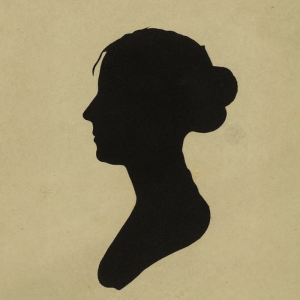Judith Sargent Murray

A prominent essayist of the American republic, Judith Sargent Murray was an early advocate of women’s equality, access to education, and the right to control their earnings. Her essay, “On the Equality of the Sexes,” was published a year before Mary Wolstonecraft’s renowned 1792 Vindication of the Rights of Women.
Born on May 1, 1751 in Gloucester, Massachusetts, Murray was the oldest of eight children of the wealthy merchant family of Winthrop Sargent and Judith Saunders Sargent. Only three of her siblings survived into adulthood. With reading and writing the only education typical for women of her time, Murray relied on the vast family library to teach herself history, philosophy, geography, and literature. At age nine, she began writing poetry, which her father proudly read to family members.
In 1769, Murray married John Stevens, a ship captain, and they adopted his orphan nieces and her cousin. During the American Revolution, however, Gloucester’s shipping industry suffered, with Stevens facing debtor’s prison by war’s end. In 1784, Murray tried publishing under a pseudonym to end their financial woes, to no avail. Stevens fled to the West Indies, where he died in 1786.
Two years later, Judith Sargent married John Murray, a Unitarian/Universalist minister she met years earlier and to whom her family had given land to build America’s first Universalist/Unitarian Meetinghouse in 1780. Traveling with her husband, Murray met prominent people, including George and Martha Washington, Benjamin Franklin, and Catherine Littlefield Greene. At age 38, Murray gave birth to a son who lived only a few hours; in 1791, at age 40, she delivered her daughter Julia Marie.
Throughout, Murray built a literary life, often writing under a pseudonym (sometimes as “Honora,” “Martesia,” or “Constantia”). In 1792, she assumed a male identity and pen name “The Gleaner” for her column in the Massachusetts Magazine. The family moved to Boston the next year, where Murray’s play, The Medium (1795), was likely the first by an American author to be produced on stage. Murray also published poetry.
A staunch believer in improved educational opportunities for women, Murray’s essays were vital to the post-Revolutionary notion of “Republican Motherhood.” Advocates, notably Abigail Adams and Murray, argued that the success of the new nation required intelligent and virtuous citizens—and since the education of patriotic sons (future voters) rested with mothers, women should be educated. Murray’s essays challenged prevailing notions that the female brain was inherently inferior; she argued instead that women were stifled not by physical limitations but by lack of access to education. Murray educated her daughter at home until she was old enough to attend an academy.
Meanwhile, Murray’s writing kept the family financially solvent. In 1798, she published “The Gleaner’s” collected columns. To ensure a profit, Murray recruited 800 presale “subscribers,” along with endorsements from President Washington and Vice President John Adams.
In 1802, Murray helped her cousin, Judith Saunders, and Clementine Beach open a female academy in Dorchester, south of Boston. Financial strain worsened after John Murray suffered a stroke in 1809. After his death in 1815, Murray completed and published her husband’s autobiography. She then moved to the frontier town of Natchez, Mississippi to live with her married daughter, Julia Marie Bingamon. She died there at age 69. Murray’s letter books were discovered at a nearby Natchez plantation 164 years later.
- Constantia. “On the Equality of the Sexes”. Massachusetts Magazine. Boston: I. Thomas and E.T. Andrews, 1790. Vol. II. pgs. 132-135. Accessed August 9 2006.
- James, Janet Wilson. “Judith Sargent Murray” in James, Edward T., Janet Wilson James, Paul S. Boyer. Notable American Women: 1607-1950, A Biographical Dictionary. Cambridge: Belknap Press, 1971.
- "Murray, Judith Sargent." Shaping of America, 1783-1815 Reference Library. Lawrence W. Baker, et al., eds. Vol. 3: Biographies Volume 2. Detroit: UXL, 2006. 393-400. U.S. History in Context. Web. 9 Feb. 2015. Accessed January 10, 2015.
- Bonnie Hurd. “Judith Sargent Murray (1751-1820)”. Judith Sargent Murray Society. Accessed January 10, 2015.
- Smith, Bonnie Hurd. “Judith Sargent Murray”. Dictionary of Unitarian and Universalist Biography. Unitarian Universalist History & Heritage Association. Accessed January 10, 2015.
- Weatherford, Doris. American Women’s History: An A to Z of People, Organizations, Issues, and Events. New York, NY: Patience Hall General Reference, 1994.
MLA - Michals, Debra. "Judith Sargent Murray." National Women's History Museum. National Women's History Museum, 2015. Date accessed.
Chicago - Michals, Debra. "Judith Sargent Murray." National Women's History Museum. 2015. www.womenshistory.org/education-resources/biographies/judith-sargent-murray.
Web Sites:
Books:
-
Cowell, Pattie ed. Women Poets in Revolutionary America 1650-1775: An Anthology. Troy: Whitston Publishing, 1981.
-
Field, Vena Bernadatte. Constantia: A Study of the Life and Works of Judith Sargent Murray, 1751-1820. Orono, Maine: University Press, 1931.
-
Harris, Sharon M., ed. Selected Writings of Judith Sargent Murray. New York: Oxford University Press, 1995.
-
James, Janet Wilson. “Judith Sargent Murray,” in Notable American Women, 1607-1950, Volume Two. Cambridge: Harvard University Press, 1971.
-
Kerber, Linda K. Women of the Republic: Intellect & Ideology in Revolutionary America. New York: W.W. Norton & Company, 1980.
-
Judith Sargent Murray. The Gleaner, with an introductory essay by Nina Baym. Schenectady, NY: Union College Press, 1992.




